Text
In Vitro Fertilization in India
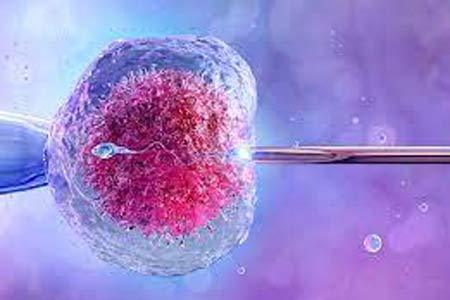
In vitro fertilization (IVF) is a fertility treatment in which eggs are removed from a woman's ovaries and fertilized with sperm in a laboratory. The fertilized eggs, called embryos, are then transferred to the woman's uterus, where they can implant and grow.
IVF is a common treatment for infertility, and it can be used to treat a variety of conditions, including:
Blocked fallopian tubes: The fallopian tubes are the tubes that carry eggs from the ovaries to the uterus. If the fallopian tubes are blocked, eggs cannot reach the uterus and fertilization cannot occur.
Low sperm count: A low sperm count can make it difficult for sperm to fertilize an egg.
Endometriosis: Endometriosis is a condition in which tissue that normally lines the uterus grows outside of the uterus. This can damage the fallopian tubes and make it difficult for eggs to travel to the uterus.
Anovulation: Anovulation is the absence of ovulation, which is the release of an egg from the ovary. If a woman does not ovulate, she cannot become pregnant.
Types of IVF
There are two main types of IVF:
Conventional IVF: This is the most common type of IVF. In conventional IVF, the eggs are removed from the woman's ovaries and fertilized with sperm in a laboratory. The fertilized eggs are then transferred to the woman's uterus.
ICSI: ICSI stands for intracytoplasmic sperm injection. In ICSI, a single sperm is injected directly into an egg. This is a more specialized type of IVF that is often used when the man has a low sperm count or poor sperm quality.
Symptoms
There are no specific symptoms of IVF. However, some women may experience side effects from the medications used to stimulate ovulation, such as bloating, nausea, and fatigue.
Causes
Infertility is the inability to get pregnant after 12 months of regular unprotected sex. There are many causes of infertility, including blocked fallopian tubes, low sperm count, endometriosis, and anovulation.
Diagnosis
If you are having trouble getting pregnant, you should see a doctor to be evaluated for infertility. The doctor will perform a physical examination and ask you about your medical history. You may also need to have tests, such as blood tests, ultrasounds, and semen analysis.
Treatments
If you are diagnosed with infertility, there are a number of treatments available, including IVF. IVF is a successful treatment for many people, but it is not always successful. The success rate of IVF depends on a number of factors, including the woman's age, the man's sperm quality, and the cause of infertility.
Risks
The risks of IVF are relatively low. However, there are some risks associated with the procedure, including:
Ovarian hyperstimulation syndrome (OHSS): OHSS is a rare but serious complication of IVF that can cause fluid to build up in the abdomen and other parts of the body.
Ectopic pregnancy: An ectopic pregnancy is a pregnancy that occurs outside of the uterus. Ectopic pregnancies are a serious complication of IVF, and they can be life-threatening.
Multiple births: IVF can increase the risk of multiple births. Multiple births can be high-risk for both the mother and the babies.
Procedure
The procedure for IVF varies depending on the type of IVF being performed. However, some common steps include:
Stimulation of ovulation: The woman's ovaries are stimulated with medications to produce multiple eggs.
Egg retrieval: The eggs are removed from the woman's ovaries using a needle and a thin tube.
Fertilization: The eggs are fertilized with sperm in a laboratory.
Embryo transfer: The embryos are transferred to the woman's uterus.
Recovery
The recovery time for IVF varies depending on the woman's individual experience. However, most women are able to return to their normal activities within a few days.
Success rate
The success rate of IVF depends on a number of factors, including the woman's age, the man's sperm quality, and the cause of infertility. The overall success rate of IVF is about 35%. However, the success rate is higher for women under the age of 35.
Cost in India
The cost of IVF in India varies depending on the type of IVF being performed, the clinic, and the city. However, IVF is generally more affordable in India than in other countries.
Benefits
IVF can be a successful treatment for infertility, and it can help many people to achieve their dream of having a child.
#In Vitro Fertilization#In Vitro Fertilization in India#In Vitro Fertilization Types#In Vitro Fertilization symptoms#In Vitro Fertilization causes#In Vitro Fertilization Diagnosis#In Vitro Fertilization Success Rate#In Vitro Fertilization Procedure#In Vitro Fertilization Recovery#In Vitro Fertilization Cost#In Vitro Fertilization Cost in India
0 notes
Text
Rhinoplasty Surgery in India
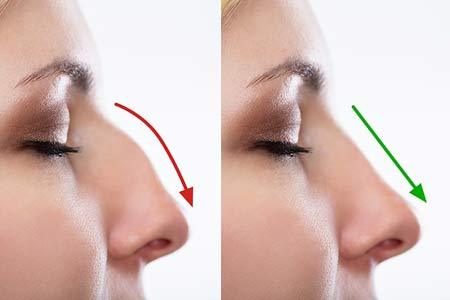
Rhinoplasty, also known as a nose job, is a surgical procedure to reshape the nose. It is a common cosmetic procedure that can be performed to improve the appearance of the nose.
There are two main types of rhinoplasty:
Closed rhinoplasty: This type of rhinoplasty is performed through incisions inside the nose.
Open rhinoplasty: This type of rhinoplasty is performed through an incision across the columella, which is the strip of tissue that separates the nostrils.
Symptoms
There are no specific symptoms of rhinoplasty. However, some people may experience pain, swelling, bruising, or numbness in the nose area after the surgery.
Causes
Rhinoplasty is typically performed for cosmetic reasons. Some people may choose to have rhinoplasty to improve their self-esteem or to feel more confident in their appearance. Rhinoplasty can also be performed to correct deformities in the nose, such as a deviated septum or a humped nose.
Diagnosis
A plastic surgeon will typically diagnose rhinoplasty by performing a physical examination of the nose. The surgeon will also ask about the patient's medical history and any concerns they have about their appearance.
Treatments
The only treatment for rhinoplasty is the procedure itself. Rhinoplasty is typically performed as an outpatient procedure under general anesthesia. The procedure takes about 2-3 hours to complete.
Risks
The risks of rhinoplasty include:
Infection
Bleeding
Scarring
Asymmetry
Numbness in the nose area
Difficulty breathing
Procedure
The procedure for rhinoplasty varies depending on the type of procedure being performed. However, some common steps include:
Anesthesia is administered.
Incisions are made in the nose.
The cartilage and bone in the nose are reshaped.
The incisions are closed with sutures.
Recovery
The recovery time for rhinoplasty varies depending on the type of procedure being performed. However, most people are able to return to their normal activities within 1-2 weeks. However, some people may experience numbness in the nose area for several months after the surgery.
Success rate
The success rate of rhinoplasty is high. Most people are satisfied with the results of the procedure.
Cost in India
The cost of rhinoplasty in India varies depending on the type of procedure being performed, the surgeon's fees, and the location of the surgery. However, rhinoplasty is generally more affordable in India than in other countries.
#Rhinoplasty#Rhinoplasty Surgery#Rhinoplasty Surgery in India#Rhinoplasty Surgery Cost#Rhinoplasty Surgery Cost in India#Rhinoplasty Surgery Types#Rhinoplasty Surgery Causes#Rhinoplasty Surgery Risks#Rhinoplasty Surgery Symptoms#Rhinoplasty Surgery Procedure#Rhinoplasty Surgery Success Rate
0 notes
Text
Otoplasty in Surgery

Otoplasty, also known as ear pinning, is a surgical procedure to reshape, reposition, or reduce the size of the ears. It is a common cosmetic procedure that can be performed to improve the appearance of the ears.
Types
There are two main types of otoplasty:
Pinnaplasty: This type of otoplasty involves reshaping the pinna, which is the visible part of the ear.
Conchaplasty: This type of otoplasty involves reducing the size of the concha, which is the bowl-shaped part of the ear.
Symptoms
There are no specific symptoms of otoplasty. However, some people may experience pain, swelling, bruising, or numbness in the ear area after the surgery.
Causes
Otoplasty is typically performed for cosmetic reasons. Some people may choose to have otoplasty to improve their self-esteem or to feel more confident in their appearance. Otoplasty can also be performed to correct deformities in the ears, such as protruding ears or large ears.
Diagnosis
A plastic surgeon will typically diagnose otoplasty by performing a physical examination of the ears. The surgeon will also ask about the patient's medical history and any concerns they have about their appearance.
Treatments
The only treatment for otoplasty is the procedure itself. Otoplasty is typically performed as an outpatient procedure under local or general anesthesia. The procedure takes about 1-2 hours to complete.
Risks
The risks of otoplasty include:
Infection
Bleeding
Scarring
Asymmetry
Numbness in the ear area
Difficulty wearing glasses
Procedure
The procedure for otoplasty varies depending on the type of procedure being performed. However, some common steps include:
Anesthesia is administered.
An incision is made behind the ear.
The cartilage in the ear is reshaped or repositioned.
The incision is closed with sutures.
Recovery
The recovery time for otoplasty varies depending on the type of procedure being performed. However, most people are able to return to their normal activities within 1-2 weeks. However, some people may experience numbness in the ear area for several months after the surgery.
Success rate
The success rate of otoplasty is high. Most people are satisfied with the results of the procedure.
Cost in India
The cost of otoplasty in India varies depending on the type of procedure being performed, the surgeon's fees, and the location of the surgery. However, otoplasty is generally more affordable in India than in other countries.
#Otoplasty#Otoplasty Surgery#Otoplasty Surgery in India#Otoplasty types#Otoplasty symptoms#Otoplasty causes#Otoplasty procedure#Otoplasty recovery#Otoplasty Cost in India#Otoplasty Cost
0 notes
Text
Genioplasty in India

Genioplasty is a surgical procedure that changes the position of the chin. It is a type of orthognathic surgery, which is surgery that corrects the position of the bones in the face. Genioplasty can be performed to improve the appearance of the chin, to correct asymmetries in the face, or to improve the patient's bite.
There are two main types of genioplasty:
Sliding genioplasty: This type of genioplasty involves moving the chin bone forward or backward.
Onlay genioplasty: This type of genioplasty involves adding a piece of bone or synthetic material to the chin.
Symptoms
There are no specific symptoms of genioplasty. However, some people may experience pain, swelling, bruising, or numbness in the chin area after the surgery.
Causes
Genioplasty is typically performed for cosmetic reasons. Some people may choose to have genioplasty to improve their self-esteem or to feel more confident in their appearance. Genioplasty can also be performed to correct asymmetries in the face or to improve the patient's bite.
Diagnosis
A plastic surgeon will typically diagnose genioplasty by performing a physical examination of the chin area. The surgeon will also ask about the patient's medical history and any concerns they have about their appearance.
Treatments
The only treatment for genioplasty is the procedure itself. Genioplasty is typically performed as an outpatient procedure under general anesthesia. The procedure takes about 1-2 hours to complete.
Risks
The risks of genioplasty include:
Infection
Bleeding
Scarring
Asymmetry
Numbness in the chin area
Difficulty speaking or swallowing
Procedure
The procedure for genioplasty varies depending on the type of procedure being performed. However, some common steps include:
Anesthesia is administered.
An incision is made in the chin area.
The chin bone is moved to the desired position.
The incision is closed with sutures.
Recovery
The recovery time for genioplasty varies depending on the type of procedure being performed. However, most people are able to return to their normal activities within 1-2 weeks. However, some people may experience numbness in the chin area for several months after the surgery.
Success rate
The success rate of genioplasty is high. Most people are satisfied with the results of the procedure.
Cost in India
The cost of genioplasty in India varies depending on the type of procedure being performed, the surgeon's fees, and the location of the surgery. However, genioplasty is generally more affordable in India than in other countries.
#Genioplasty#Genioplasty in India#Genioplasty Cost in India#Genioplasty Success Rate#Genioplasty procedure#Genioplasty Risks#Genioplasty types#Genioplasty Cost
0 notes
Text
Cryolipolysis Surgery in India
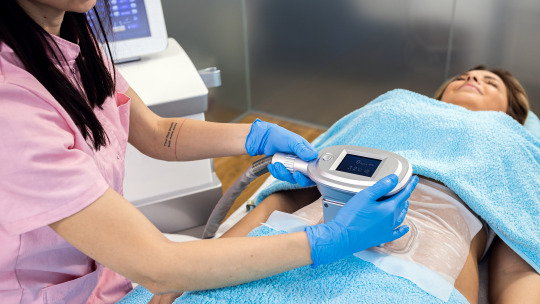
Cryolipolysis, also known as CoolSculpting, is a non-surgical fat reduction procedure that uses controlled cooling to eliminate fat cells. It is a popular cosmetic procedure that can help to improve the appearance of the body by reducing fat in specific areas.
Types
There are no types of cryolipolysis. However, there are different brands of cryolipolysis machines, such as CoolSculpting, Zeltiq, and CoolMint.
Symptoms
There are no specific symptoms of cryolipolysis. However, some people may experience temporary side effects, such as redness, bruising, and swelling in the treated area.
Causes
Cryolipolysis is typically performed for cosmetic reasons. Some people may choose to have cryolipolysis to improve their self-esteem or to feel more confident in their appearance.
Diagnosis
A plastic surgeon will typically diagnose cryolipolysis by performing a physical examination of the area of the body that the patient wants to treat. The surgeon will also ask about the patient's medical history and any concerns they have about their appearance.
Treatments
The only treatment for cryolipolysis is the procedure itself. Cryolipolysis is typically performed as an outpatient procedure in a doctor's office or clinic. The procedure takes about 30-60 minutes to complete.
Risks
The risks of cryolipolysis are generally mild and go away on their own within a few days. These risks include:
Temporary redness, bruising, and swelling
Numbness in the treated area
Pain
Irritation of the skin
Procedure
The procedure for cryolipolysis varies depending on the type of machine being used. However, some common steps include:
Anesthesia is not typically used for cryolipolysis.
A device is applied to the area of the body that the patient wants to treat.
The device uses controlled cooling to freeze the fat cells in the area.
The fat cells are destroyed by the cold and are then eliminated from the body through the lymphatic system.
Recovery
The recovery time for cryolipolysis is typically short. Most people are able to return to their normal activities within a few days. However, some people may experience temporary side effects, such as redness, bruising, and swelling, which may last for a few weeks.
Success rate
The success rate of cryolipolysis is high. Most people see a significant reduction in fat in the treated area after one or two treatments. However, the results of cryolipolysis are not permanent. The fat cells that are destroyed by the procedure can be replaced if the patient gains weight.
Cost in India
The cost of cryolipolysis in India varies depending on the type of machine being used, the location of the treatment, and the experience of the surgeon. However, cryolipolysis is generally more affordable in India than in other countries.
#cryolipolysis#cryolipolysis surgery#cryolipolysis types#cryolipolysis symptoms#cryolipolysis causes#cryolipolysis success rate#cryolipolysis surgery cost#cryolipolysis surgery cost in india
0 notes
Text
Buttock Augmentation in India
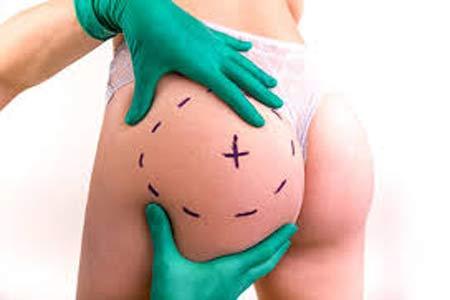
Buttock augmentation is a surgical procedure that increases the size, shape, and/or firmness of the buttocks. It is a popular cosmetic procedure that can help to improve the appearance of the buttocks by making them fuller, rounder, and more lifted.
Types
There are two main types of buttock augmentation:
Fat transfer: This type of buttock augmentation involves transferring fat from another part of the body, such as the abdomen or thighs, to the buttocks.
Implant-based: This type of buttock augmentation involves inserting implants into the buttocks. There are two types of implants: saline and silicone. Saline implants are filled with salt water, while silicone implants are filled with silicone gel.
Symptoms
There are no specific symptoms of buttock augmentation. However, some people may experience pain, swelling, bruising, or numbness in the area of the surgery.
Causes
Buttock augmentation is typically performed for cosmetic reasons. Some people may choose to have buttock augmentation to improve their self-esteem or to feel more confident in their appearance.
Diagnosis
A plastic surgeon will typically diagnose buttock augmentation by performing a physical examination of the buttocks. The surgeon will also ask about the patient's medical history and any concerns they have about their appearance.
Treatments
The only treatment for buttock augmentation is surgery. Buttock augmentation is typically performed as an outpatient procedure under general anesthesia. The procedure takes about 1-2 hours to complete.
Risks
The risks of buttock augmentation include:
Infection
Bleeding
Scarring
Asymmetry
Implant migration or rotation
Capsular contracture (hardening of the scar tissue around the implant)
Procedure
The procedure for buttock augmentation varies depending on the type of surgery being performed. However, some common steps include:
Anesthesia is administered.
An incision is made in the buttocks.
The fat or implant is inserted into the buttocks.
The incision is closed with sutures.
Recovery
The recovery time for buttock augmentation varies depending on the type of surgery being performed. However, most patients are able to return to work or school within 1-2 weeks. The incisions will be closed with sutures, which will be removed after a few days.
Success rate
The success rate of buttock augmentation is high. Most patients are satisfied with the results of the procedure.
Cost in India
The cost of buttock augmentation in India varies depending on the type of surgery being performed, the surgeon's fees, and the location of the surgery. However, buttock augmentation is generally more affordable in India than in other countries.
#buttock augmentation#buttock augmentation surgery#buttock augmentation types#buttock augmentation symptoms#buttock augmentation causes#buttock augmentation success rate#buttock augmentation risks#buttock augmentation surgery cost#buttock augmentation surgery cost in india
0 notes
Text
Breast Reduction Surgery in India

Breast reduction, also known as reduction mammaplasty, is a surgical procedure that removes excess breast tissue, fat, and skin to reduce the size of the breasts. It is a common cosmetic procedure that can help to improve the appearance of the breasts by making them smaller, lighter, and more proportionate to the body.
Types
There are two main types of breast reduction:
Vertical breast reduction: This type of breast reduction involves making an incision around the areola and extending it vertically down to the breast crease. The surgeon then removes excess breast tissue, fat, and skin.
Inferior pedicle breast reduction: This type of breast reduction involves making an incision around the areola and extending it inferiorly (downwards) towards the breast crease. The surgeon then removes excess breast tissue, fat, and skin.
Symptoms
The most common symptoms of large breasts are:
Back, neck, and shoulder pain
Difficulty exercising
Skin irritation under the breasts
Embarrassment or discomfort with the size of the breasts
Causes
The most common cause of large breasts is genetics. Other causes of large breasts include:
Pregnancy and breastfeeding
Weight gain
Certain medications
Diagnosis
A plastic surgeon will typically diagnose large breasts by performing a physical examination of the breasts. The surgeon will also ask about the patient's medical history and any concerns they have about their appearance.
Treatments
The only treatment for large breasts is surgery. Breast reduction is typically performed as an outpatient procedure under general anesthesia. The procedure takes about 2-3 hours to complete.
Risks
The risks of breast reduction include:
Infection
Bleeding
Scarring
Asymmetry
Loss of sensation in the nipples
Procedure
The procedure for breast reduction varies depending on the type of surgery being performed. However, some common steps include:
Anesthesia is administered.
An incision is made around the areola and extended vertically or inferiorly.
Excess breast tissue, fat, and skin is removed.
The incision is closed with sutures.
Recovery
The recovery time for breast reduction varies depending on the type of surgery being performed. However, most patients are able to return to work or school within 2-3 weeks. The incisions will be closed with sutures, which will be removed after a few days.
Success rate
The success rate of breast reduction is high. Most patients are satisfied with the results of the procedure.
Cost in India
The cost of breast reduction in India varies depending on the type of surgery being performed, the surgeon's fees, and the location of the surgery. However, breast reduction is generally more affordable in India than in other countries.
#Breast Reduction#Breast Reduction Surgery#Breast Reduction Surgery in India#Breast Reduction Types#Breast Reduction Risks#Breast Reduction Causes#Breast Reduction Procedure#Breast Reduction Success Rate#Breast Reduction Cost#Breast Reduction Surgery Cost#Breast Reduction Surgery Cost in India
0 notes
Text
Breast Lift Surgery in India

Breast lift, also known as mastopexy, is a surgical procedure that lifts and reshapes the breasts. It is a common cosmetic procedure that can help to improve the appearance of the breasts by lifting them, reducing sagging, and making them more symmetrical.
Types
There are two main types of breast lift:
Vertical breast lift: This type of breast lift involves making an incision around the areola and extending it vertically down to the breast crease. The surgeon then lifts the breast tissue and removes excess skin.
Inferior pedicle breast lift: This type of breast lift involves making an incision around the areola and extending it inferiorly (downwards) towards the breast crease. The surgeon then lifts the breast tissue and removes excess skin.
Symptoms
The most common symptoms of breast sagging are:
The breasts are lower than they used to be.
The nipples are pointing downwards.
The breasts are asymmetrical.
Causes
The most common cause of breast sagging is aging. As we age, the skin loses elasticity and the breasts can lose their shape. Other causes of breast sagging include:
Pregnancy and breastfeeding
Weight loss or gain
Genetics
Diagnosis
A plastic surgeon will typically diagnose breast sagging by performing a physical examination of the breasts. The surgeon will also ask about the patient's medical history and any concerns they have about their appearance.
Treatments
The only treatment for breast sagging is surgery. Breast lift is typically performed as an outpatient procedure under general anesthesia. The procedure takes about 1-2 hours to complete.
Risks
The risks of breast lift include:
Infection
Bleeding
Scarring
Asymmetry
Loss of sensation in the nipples
Procedure
The procedure for breast lift varies depending on the type of surgery being performed. However, some common steps include:
Anesthesia is administered.
An incision is made around the areola and extended vertically or inferiorly.
The breast tissue is lifted and excess skin is removed.
The incision is closed with sutures.
Recovery
The recovery time for breast lift varies depending on the type of surgery being performed. However, most patients are able to return to work or school within a few days. The incisions will be closed with sutures, which will be removed after a few days.
Success rate
The success rate of breast lift is high. Most patients are satisfied with the results of the procedure.
Cost in India
The cost of a breast lift in India varies depending on the type of surgery being performed, the surgeon's fees, and the location of the surgery. However, breast lift is generally more affordable in India than in other countries.
#Breast Lift#Breast Lift Surgery#Breast Lift Surgery Cost#Breast Lift Surgery Cost in India#Breast Lift Surgery Procedure#Breast Lift Surgery Recovery#Breast Lift Surgery Success Rate#Breast Lift Surgery Diagnosis#Breast Lift Surgery Risks
0 notes
Text
Breast Augmentation Surgery in India

Breast augmentation is a surgical procedure that involves enlarging the breasts by inserting implants or fat transfer. It is one of the most common cosmetic procedures performed in the world.
Types
There are two main types of breast augmentation: implant-based and fat transfer.
Implant-based breast augmentation: This type of breast augmentation involves inserting implants into the breasts. There are two types of implants: saline and silicone. Saline implants are filled with salt water, while silicone implants are filled with silicone gel.
Fat transfer breast augmentation: This type of breast augmentation involves transferring fat from another part of the body, such as the abdomen or thighs, to the breasts.
Symptoms
There are no specific symptoms of breast augmentation. However, some people may experience pain, swelling, bruising, or numbness in the area of the surgery.
Causes
Breast augmentation is typically performed for cosmetic reasons. Some people may choose to have breast augmentation to improve their self-esteem or to feel more confident in their appearance.
Diagnosis
A plastic surgeon will typically diagnose breast augmentation by performing a physical examination of the breasts. The surgeon will also ask about the patient's medical history and any concerns they have about their appearance.
Treatments
The only treatment for breast augmentation is surgery. Breast augmentation is typically performed as an outpatient procedure under general anesthesia. The procedure takes about 1-2 hours to complete.
Risks
The risks of breast augmentation include:
Infection
Bleeding
Scarring
Capsular contracture (hardening of the scar tissue around the implant)
Implant rupture or deflation
Procedure
The procedure for breast augmentation varies depending on the type of surgery being performed. However, some common steps include:
Anesthesia is administered.
An incision is made in the breast.
The implant is inserted into the breast.
The incision is closed with sutures.
Recovery
The recovery time for breast augmentation varies depending on the type of surgery being performed. However, most patients are able to return to work or school within a few days. The incisions will be closed with sutures, which will be removed after a few days.
Success rate
The success rate of breast augmentation is high. Most patients are satisfied with the results of the procedure.
Cost in India
The cost of breast augmentation in India varies depending on the type of surgery being performed, the surgeon's fees, and the location of the surgery. However, breast augmentation is generally more affordable in India than in other countries.
#Breast augmentation#Breast augmentation Types#Breast augmentation symptoms#Breast augmentation procedure#Breast augmentation recovery#Breast augmentation success rate#Breast augmentation cost#Breast augmentation cost in india
0 notes
Text
Blepharoplasty Surgery in India

Blepharoplasty, also known as eyelid surgery, is a cosmetic or reconstructive procedure that removes excess skin, fat, and muscle from the upper and/or lower eyelids. It is one of the most common cosmetic procedures performed in the United States.
Types
There are two main types of blepharoplasty: upper blepharoplasty and lower blepharoplasty. Upper blepharoplasty is typically performed to remove excess skin from the upper eyelids, which can cause a tired or droopy appearance. Lower blepharoplasty is typically performed to remove excess fat and skin from the lower eyelids, which can cause bags or puffiness under the eyes.
Symptoms
The most common symptoms of blepharoplasty are:
Excess skin on the upper eyelids
Bags or puffiness under the eyes
Drooping eyelids
Difficulty seeing
Causes
The most common cause of blepharoplasty is aging. As we age, the skin around our eyes loses elasticity and fat can accumulate in the eyelids. This can lead to the symptoms of blepharoplasty.
Diagnosis
A plastic surgeon will typically diagnose blepharoplasty by performing a physical examination of the eyes. The surgeon will also ask about the patient's medical history and any concerns they have about their appearance.
Treatments
The only treatment for blepharoplasty is surgery. Blepharoplasty is typically performed as an outpatient procedure under local or general anesthesia. The procedure takes about 1-2 hours to complete.
Risks
The risks of blepharoplasty include:
Infection
Bleeding
Scarring
Dry eyes
Double vision
Uneven eyelids
Procedure
The procedure for blepharoplasty varies depending on the type of surgery being performed. However, some common steps include:
Anesthesia is administered.
An incision is made in the eyelid.
Excess skin, fat, and muscle are removed.
The incision is closed with sutures.
Recovery
The recovery time for blepharoplasty varies depending on the type of surgery being performed. However, most patients are able to return to work or school within a few days. The incisions will be closed with sutures, which will be removed after a few days.
Success rate
The success rate of blepharoplasty is high. Most patients are satisfied with the results of the procedure.
Cost in India
The cost of blepharoplasty in India varies depending on the type of surgery being performed, the surgeon's fees, and the location of the surgery. However, blepharoplasty is generally more affordable in India than in other countries.
Plastic surgery in India
Plastic surgery is a popular procedure in India. There are many qualified plastic surgeons in India who offer a wide range of procedures, including blepharoplasty. The cost of plastic surgery in India is generally more affordable than in other countries.
#blepharoplasty#blepharoplasty types#blepharoplasty symptoms#blepharoplasty Diagnosis#blepharoplasty risks#blepharoplasty success rate#blepharoplasty cost#blepharoplasty cost in india
0 notes
Text
Plastic Surgery in India
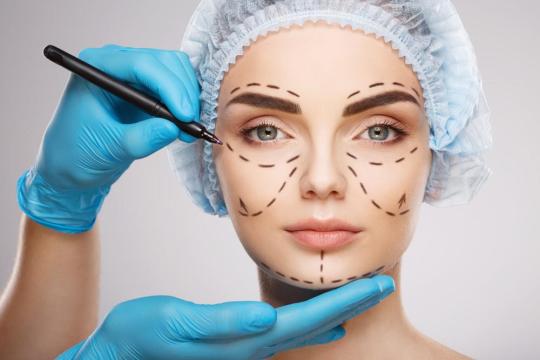
Plastic surgery is a branch of medicine that deals with the restoration, reconstruction, or alteration of the human body.
Types
It is a broad field that encompasses many different types of procedures, including:
Aesthetic surgery: This type of surgery is performed to improve a person's appearance. Common aesthetic procedures include rhinoplasty (nose reshaping), blepharoplasty (eyelid surgery), breast augmentation, and liposuction.
Reconstructive surgery: This type of surgery is performed to repair or reconstruct a part of the body that has been damaged or deformed by injury, disease, or birth defect. Common reconstructive procedures include breast reconstruction after mastectomy, cleft lip and palate repair, and burn surgery.
Microsurgery: This type of surgery uses very small instruments and techniques to repair or reconstruct small structures in the body. Microsurgery is often used in reconstructive surgery, such as to reattach a severed finger or to repair a damaged nerve.
Symptoms:
There are no specific symptoms of plastic surgery. However, some people may experience pain, swelling, bruising, or numbness in the area of the surgery.
Causes:
Plastic surgery is typically performed for cosmetic or reconstructive reasons. Cosmetic surgery is performed to improve a person's appearance, while reconstructive surgery is performed to repair or reconstruct a part of the body that has been damaged or deformed.
Diagnosis:
A plastic surgeon will typically perform a physical examination and discuss the patient's goals for the surgery. The surgeon may also order imaging tests, such as an MRI or CT scan, to assess the extent of the damage or deformity.
Treatments:
The specific treatment for plastic surgery will vary depending on the type of procedure being performed. However, some common treatments include:
Incision: An incision is made in the skin to access the area of the surgery.
Excision: Tissue may be removed from the area of the surgery.
Implants: Implants may be used to add volume or structure to the area of the surgery.
Grafts: Grafts of tissue from another part of the body may be used to repair or reconstruct the area of the surgery.
Risks:
The risks of plastic surgery vary depending on the type of procedure being performed. However, some common risks include:
Infection: The incision site may become infected.
Bleeding: There may be bleeding from the incision site.
Scarring: There may be scarring at the incision site.
Allergic reaction: The patient may have an allergic reaction to the anesthesia or the materials used in the surgery.
Procedure:
The specific procedure for plastic surgery will vary depending on the type of procedure being performed. However, some common steps in plastic surgery include:
Anesthesia: The patient will be given anesthesia to numb the area of the surgery.
Incision: An incision is made in the skin to access the area of the surgery.
Surgery: The surgeon performs the desired procedure.
Sutures: The incision is closed with sutures.
Bandages: The incision is bandaged.
Recovery:
The recovery time for plastic surgery varies depending on the type of procedure being performed. However, some common steps in recovery include:
Rest: The patient will need to rest after the surgery.
Ice: The incision site may be iced to reduce swelling and pain.
Elevation: The incision site may be elevated to reduce swelling and pain.
Bandages: The incision will be bandaged.
Sutures: The sutures will be removed after a few days.
Success rate:
The success rate of plastic surgery varies depending on the type of procedure being performed. However, most plastic surgery procedures are successful in achieving the desired results.
Cost in India:
The cost of plastic surgery in India varies depending on the type of procedure being performed and the surgeon's fees. However, plastic surgery is generally more affordable in India than in other countries.
#Plastic Surgery#Plastic Surgery symptoms#Plastic Surgery risks#Plastic Surgery Cost#Plastic Surgery Success Rate#Plastic Surgery Procedure#Plastic Surgery Recovery#Plastic Surgery Cost in India#Plastic Surgery in India
0 notes
Text
Prostate Cancer Treatment in India
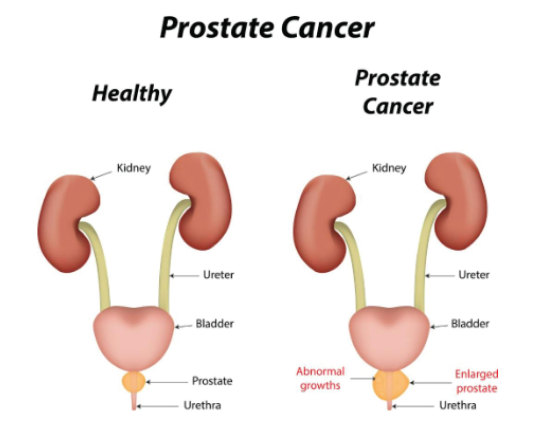
Prostate cancer is a type of cancer that starts in the prostate, a small gland in men that produces seminal fluid. It is the most common cancer in men, after skin cancer.
Symptoms
The symptoms of prostate cancer can vary depending on the stage of the cancer. Early-stage prostate cancer may not cause any symptoms at all. As the cancer progresses, the symptoms may include:
Trouble urinating, such as difficulty starting or stopping urination, a need to urinate more often, or a weak or interrupted stream
Blood in the urine or semen
Pain in the back, hips, or pelvis
Erectile dysfunction
Bone pain
Causes
The causes of prostate cancer are not fully understood, but there are a number of factors that can increase your risk of developing the disease. These factors include:
Age: Prostate cancer is more common in older men.
Family history: If you have a family history of prostate cancer, you are at increased risk of developing the disease.
Race: African American men are more likely to develop prostate cancer than white men.
Genetics: Some people are born with genes that increase their risk of developing prostate cancer.
Certain lifestyle factors: Certain lifestyle factors, such as obesity and smoking, can increase your risk of developing prostate cancer.
Diagnosis
Prostate cancer is diagnosed through a combination of physical exams, blood tests, imaging tests, and biopsies. The treatment for prostate cancer depends on the stage of the cancer, the patient's overall health, and the patient's preferences. Treatment options for prostate cancer include:
Active surveillance: This is a watch-and-wait approach for men with early-stage prostate cancer that is not causing any symptoms.
Surgery: Surgery is the main treatment for prostate cancer. The type of surgery that is performed will depend on the stage of the cancer.
Radiation therapy: Radiation therapy is used to kill cancer cells.
Hormone therapy: Hormone therapy is used to stop the production of testosterone, which can help to slow the growth of prostate cancer.
Chemotherapy: Chemotherapy is used to kill cancer cells.
Success Rate
The success rate of prostate cancer treatment depends on the stage of the cancer at the time of diagnosis. The overall 5-year survival rate for prostate cancer is about 99% for localized prostate cancer, 86% for regional prostate cancer, and 31% for metastatic prostate cancer.
Side Effects
The side effects of prostate cancer treatment can vary depending on the type of treatment and the patient's individual circumstances. Some common side effects of prostate cancer treatment include:
Erectile dysfunction
Incontinence
Fatigue
Nausea and vomiting
Bone pain
Cost of Prostate Cancer Treatment
The cost of prostate cancer treatment in India varies depending on a number of factors, including the type of treatment, the hospital or clinic where the treatment is being performed, and the surgeon or oncologist who is providing the care. In general, the cost of prostate cancer treatment in India is significantly lower than in other developed countries.
For example, the average cost of surgery for prostate cancer in India is between INR 50,000 and INR 100,000, while the same procedure in the United States can cost upwards of USD 50,000.
#Prostate Cancer#Prostate Cancer Treatment#Prostate Cancer Treatment in India#Prostate Cancer Treatment Cost#Prostate Cancer Treatment Cost in India#Prostate Cancer Symptoms#Prostate Cancer Causes#Prostate Cancer Diagnosis#Prostate Cancer Success Rate#Prostate Cancer Side Effects
0 notes
Text
Ovarian Cancer Treatment in India

Ovarian cancer is a type of cancer that starts in the ovaries, which are two small organs located in the pelvis. The ovaries produce eggs and hormones. Ovarian cancer is the fifth most common cancer in women, and the eighth leading cause of cancer death in women.
Symptoms
The symptoms of ovarian cancer can vary depending on the stage of the cancer. Early-stage ovarian cancer may not cause any symptoms at all. As the cancer progresses, the symptoms may include:
Abdominal pain
Pelvic pain
Weight loss
Loss of appetite
Nausea and vomiting
Diarrhea
Constipation
Back pain
Fatigue
Causes
The causes of ovarian cancer are not fully understood, but there are a number of factors that can increase your risk of developing the disease. These factors include:
Age: Ovarian cancer is more common in older women.
Family history: If you have a family history of ovarian cancer, you are at increased risk of developing the disease.
Certain genes: Some people are born with genes that increase their risk of developing ovarian cancer.
Certain lifestyle factors: Certain lifestyle factors, such as smoking, excessive alcohol consumption, and obesity, can increase your risk of developing ovarian cancer.
Diagnosis
Ovarian cancer is diagnosed through a combination of physical exams, blood tests, imaging tests, and biopsies. The treatment for ovarian cancer depends on the stage of the cancer, the patient's overall health, and the patient's preferences. Treatment options for ovarian cancer include:
Surgery: Surgery is the main treatment for ovarian cancer. The type of surgery that is performed will depend on the stage of the cancer.
Chemotherapy: Chemotherapy is used to kill cancer cells.
Radiation therapy: Radiation therapy is used to kill cancer cells by destroying their DNA.
Targeted therapy: Targeted therapy is a type of treatment that targets specific proteins that are involved in cancer growth.
Immunotherapy: Immunotherapy is a type of treatment that helps the body's immune system fight cancer.
Success Rate
The success rate of ovarian cancer treatment depends on the stage of the cancer at the time of diagnosis. The overall 5-year survival rate for ovarian cancer is about 46%.
Side Effects
The side effects of ovarian cancer treatment can vary depending on the type of treatment and the patient's individual circumstances. Some common side effects of ovarian cancer treatment include:
Hair loss
Nausea and vomiting
Fatigue
Mouth sores
Infection
Bone marrow suppression
Cost of Ovarian Cancer Treatment
The cost of ovarian cancer treatment in India varies depending on a number of factors, including the type of treatment, the hospital or clinic where the treatment is being performed, and the surgeon or oncologist who is providing the care. In general, the cost of ovarian cancer treatment in India is significantly lower than in other developed countries.
For example, the average cost of chemotherapy for ovarian cancer in India is between INR 100,000 and INR 200,000, while the same procedure in the United States can cost upwards of USD 50,000.
#Ovarian Cancer Treatment#Ovarian Cancer Treatment in India#Ovarian Cancer Treatment Cost#Ovarian Cancer Treatment Cost in India#Ovarian Cancer#Ovarian Cancer Symptoms#Ovarian Cancer Causes#Ovarian Cancer Diagnosis#Ovarian Cancer Side Effects#Ovarian Cancer Success Rate
1 note
·
View note
Text
Pancreatic Cancer Treatment in India
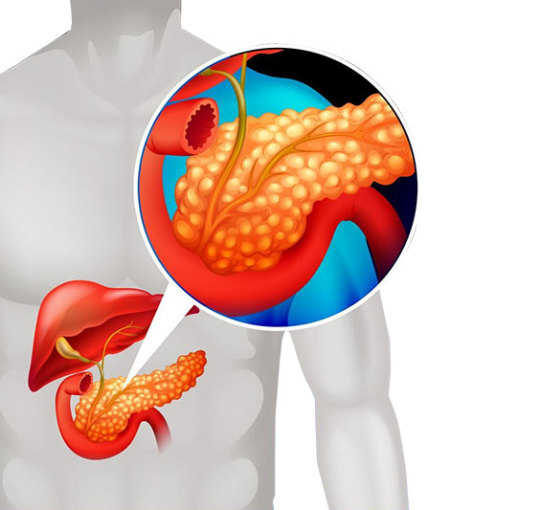
Pancreatic cancer is a type of cancer that starts in the pancreas, an organ in the abdomen that produces insulin and other hormones. It is a very serious disease, and the survival rate is low.
Symptoms
The symptoms of pancreatic cancer can vary depending on the stage of the cancer. Early-stage pancreatic cancer may not cause any symptoms at all. As the cancer progresses, the symptoms may include:
Abdominal pain
Yellowing of the skin and eyes (jaundice)
Weight loss
Loss of appetite
Nausea and vomiting
Diarrhea
Constipation
Back pain
Fatigue
Causes
The causes of pancreatic cancer are not fully understood, but there are a number of factors that can increase your risk of developing the disease. These factors include:
Age: Pancreatic cancer is more common in older adults.
Family history: If you have a family history of pancreatic cancer, you are at increased risk of developing the disease.
Certain genes: Some people are born with genes that increase their risk of developing pancreatic cancer.
Certain lifestyle factors: Certain lifestyle factors, such as smoking, excessive alcohol consumption, and obesity, can increase your risk of developing pancreatic cancer.
Diagnosis
Pancreatic cancer is diagnosed through a combination of physical exams, blood tests, imaging tests, and biopsies. The treatment for pancreatic cancer depends on the stage of the cancer, the patient's overall health, and the patient's preferences. Treatment options for pancreatic cancer include:
Surgery: Surgery is the main treatment for pancreatic cancer. The type of surgery that is performed will depend on the stage of the cancer.
Chemotherapy: Chemotherapy is used to kill cancer cells.
Radiation therapy: Radiation therapy is used to kill cancer cells by destroying their DNA.
Targeted therapy: Targeted therapy is a type of treatment that targets specific proteins that are involved in cancer growth.
Immunotherapy: Immunotherapy is a type of treatment that helps the body's immune system fight cancer.
Success Rate
The success rate of pancreatic cancer treatment depends on the stage of the cancer at the time of diagnosis. The overall 5-year survival rate for pancreatic cancer is about 9%.
The side effects of pancreatic cancer treatment can vary depending on the type of treatment and the patient's individual circumstances. Some common side effects of pancreatic cancer treatment include:
Hair loss
Nausea and vomiting
Fatigue
Mouth sores
Infection
Bone marrow suppression
Cost of Pancreatic Cancer Treatment
The cost of pancreatic cancer treatment in India varies depending on a number of factors, including the type of treatment, the hospital or clinic where the treatment is being performed, and the surgeon or oncologist who is providing the care. In general, the cost of pancreatic cancer treatment in India is significantly lower than in other developed countries.
For example, the average cost of chemotherapy for pancreatic cancer in India is between INR 100,000 and INR 200,000, while the same procedure in the United States can cost upwards of USD 50,000.
#Pancreatic Cancer Treatment#Pancreatic Cancer Treatment in India#Pancreatic Cancer Treatment Cost#Pancreatic Cancer Treatment Cost in India#Pancreatic Cancer#Pancreatic Cancer Symptoms#Pancreatic Cancer Diagnosis#Pancreatic Cancer Causes#Pancreatic Cancer Side effects
0 notes
Text
Cancer Treatment in India

Cancer is a disease in which cells grow uncontrollably and spread to other parts of the body. It is one of the leading causes of death worldwide.
Symptoms
The symptoms of cancer can vary depending on the type of cancer and the stage of the cancer. Some common symptoms of cancer include:
A lump or mass
Unexplained weight loss
Unexplained fatigue
Unexplained bleeding or discharge
Changes in bowel or bladder habits
Persistent cough or hoarseness
Pain that does not go away
Causes
The causes of cancer are not fully understood, but there are a number of factors that can increase your risk of developing the disease. These factors include:
Age: Cancer is more common in older adults.
Family history: If you have a family history of cancer, you are at increased risk of developing the disease.
Certain genes: Some people are born with genes that increase their risk of developing cancer.
Exposure to certain chemicals or radiation: Exposure to certain chemicals or radiation can increase your risk of developing cancer.
Certain lifestyle factors: Certain lifestyle factors, such as smoking, excessive alcohol consumption, and obesity, can increase your risk of developing cancer.
Diagnosis
Cancer is diagnosed through a combination of physical exams, blood tests, imaging tests, and biopsies. The treatment for cancer depends on the type of cancer, the stage of the cancer, and the patient's overall health. Treatment options for cancer include:
Surgery: Surgery is the most common treatment for cancer. The type of surgery that is performed will depend on the type of cancer and the size of the tumor.
Chemotherapy: Chemotherapy is used to kill cancer cells.
Radiation therapy: Radiation therapy is used to kill cancer cells by destroying their DNA.
Targeted therapy: Targeted therapy is a type of treatment that targets specific proteins that are involved in cancer growth.
Immunotherapy: Immunotherapy is a type of treatment that helps the body's immune system fight cancer.
Success Rate
The success rate of cancer treatment depends on the type of cancer, the stage of the cancer, and the patient's overall health. The overall 5-year survival rate for cancer varies depending on the type of cancer. For example, the 5-year survival rate for breast cancer is about 89%, while the 5-year survival rate for pancreatic cancer is about 9%.
Side Effects
The side effects of cancer treatment can vary depending on the type of treatment and the patient's individual circumstances. Some common side effects of cancer treatment include:
Hair loss
Nausea and vomiting
Fatigue
Mouth sores
Infection
Bone marrow suppression
Cost of Cancer Treatment
The cost of cancer treatment in India varies depending on a number of factors, including the type of treatment, the hospital or clinic where the treatment is being performed, and the surgeon or oncologist who is providing the care. In general, the cost of cancer treatment in India is significantly lower than in other developed countries.
For example, the average cost of chemotherapy for cancer in India is between INR 100,000 and INR 200,000, while the same procedure in the United States can cost upwards of USD 50,000.
#Cancer Treatment#Cancer Treatment in India#Cancer Treatment Symptoms#Cancer Treatment Causes#Cancer Treatment Diagnosis#Cancer Treatment Side Effects#Cancer Treatment Cost#Cancer Treatment Cost in India#Cancer Treatments
0 notes
Text
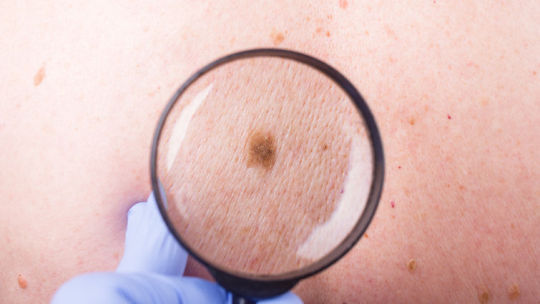
Skin cancer is a type of cancer that develops in the skin. It is the most common cancer in the world, with over 2 million new cases diagnosed each year.
Types
There are three main types of skin cancer:
Melanoma: This is the most serious type of skin cancer. It starts in the melanocytes, which are the cells that produce melanin, the pigment that gives skin its color.
Squamous cell carcinoma: This is the second most common type of skin cancer. It starts in the squamous cells, which are the flat cells that make up the outer layer of the skin.
Basal cell carcinoma: This is the most common type of skin cancer. It starts in the basal cells, which are the cells that line the deepest layer of the skin.
Symptoms
The symptoms of skin cancer can vary depending on the type of cancer. Some common symptoms of skin cancer include:
A new or changing mole
A sore that does not heal
A red, scaly patch on the skin
A lump or bump on the skin
Bleeding or crusting on the skin
Causes
The causes of skin cancer are not fully understood, but there are a number of factors that can increase your risk of developing the disease. These factors include:
Exposure to ultraviolet (UV) radiation from the sun or tanning beds
Family history of skin cancer
Fair skin
Moles
Age
Diagnosis
Skin cancer is diagnosed through a combination of physical exams, skin biopsies, and imaging tests. The treatment for skin cancer depends on the type of cancer, the stage of the cancer, and the patient's overall health. Treatment options for skin cancer include:
Surgery: Surgery is the most common treatment for skin cancer. The type of surgery that is performed will depend on the type of cancer and the size of the tumor.
Chemotherapy: Chemotherapy is used to kill cancer cells that have spread to other parts of the body.
Radiation therapy: Radiation therapy is used to kill cancer cells by destroying their DNA.
Success Rate
The success rate of skin cancer treatment depends on the type of cancer, the stage of the cancer, and the patient's overall health. The overall 5-year survival rate for melanoma is about 90%. The overall 5-year survival rate for squamous cell carcinoma is about 95%. The overall 5-year survival rate for basal cell carcinoma is about 99%.
The side effects of skin cancer treatment can vary depending on the type of treatment and the patient's individual circumstances. Some common side effects of skin cancer treatment include:
Scarring
Infection
Pain
Fatigue
Cost of Skin Cancer Treatment
The cost of skin cancer treatment in India varies depending on a number of factors, including the type of treatment, the hospital or clinic where the treatment is being performed, and the surgeon or oncologist who is providing the care. In general, the cost of skin cancer treatment in India is significantly lower than in other developed countries.
For example, the average cost of surgery for skin cancer in India is between INR 10,000 and INR 25,000, while the same procedure in the United States can cost upwards of USD 50,000.
#Skin Cancer#Skin Cancer Treatment#Skin Cancer Treatment in India#Skin Cancer Symptoms#Skin Cancer Causes#Skin Cancer Diagnosis#Skin Cancer Side Effects#Skin Cancer Cost#Skin Cancer Treatment Cost#Skin Cancer Treatment Cost in India
0 notes
Text
Uterine Cancer Treatment in India
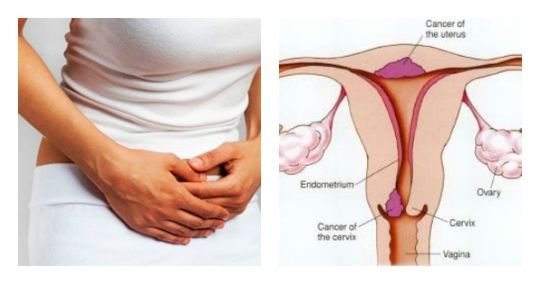
Uterine cancer is a type of cancer that starts in the uterus, the female organ that holds a fetus during pregnancy. The most common type of uterine cancer is endometrial cancer, which starts in the lining of the uterus.
Symptoms
The symptoms of uterine cancer can vary depending on the stage of the cancer. Early-stage uterine cancer may not cause any symptoms at all. As the cancer progresses, the symptoms may include:
Abnormal vaginal bleeding: This can include bleeding between periods, heavier periods than usual, or bleeding after menopause.
Vaginal discharge: This may be watery, bloody, or foul-smelling.
Pain in the pelvis or lower back: This pain may be worse during sex or during bowel movements.
Weight loss: This is often unexplained.
Fatigue: This is a feeling of tiredness or weakness.
Causes
The causes of uterine cancer are not fully understood, but there are a number of factors that can increase your risk of developing the disease. These factors include:
Age: Uterine cancer is more common in older women.
Family history: If you have a family history of uterine cancer, you are at increased risk of developing the disease.
Obesity: Being overweight or obese increases your risk of developing uterine cancer.
Inflammatory conditions: Conditions such as endometriosis and pelvic inflammatory disease (PID) can increase your risk of developing uterine cancer.
Hormone therapy: Long-term use of hormone therapy, such as estrogen, can increase your risk of developing uterine cancer.
Diagnosis
Uterine cancer is diagnosed through a combination of physical exams, blood tests, and imaging tests. The treatment for uterine cancer depends on the stage of the cancer, the patient's overall health, and the patient's preferences. Treatment options for uterine cancer include:
Surgery: Surgery is the main treatment for uterine cancer. The type of surgery that is performed will depend on the stage of the cancer.
Chemotherapy: Chemotherapy is often used after surgery to help prevent the cancer from coming back.
Radiation therapy: Radiation therapy may be used before or after surgery to help shrink the cancer.
Hormone therapy: Hormone therapy may be used to treat uterine cancer that is caused by hormones.
Success Rate
The success rate of uterine cancer treatment depends on the stage of the cancer at the time of diagnosis. The overall 5-year survival rate for uterine cancer is about 80%.
The side effects of uterine cancer treatment can vary depending on the type of treatment and the patient's individual circumstances. Some common side effects of uterine cancer treatment include:
Nausea and vomiting
Hair loss
Diarrhea
Constipation
Fatigue
Infection
Blood clots
Cost of Uterine Cancer Treatment
The cost of uterine cancer treatment in India varies depending on a number of factors, including the type of treatment, the hospital or clinic where the treatment is being performed, and the surgeon or oncologist who is providing the care. In general, the cost of uterine cancer treatment in India is significantly lower than in other developed countries.
For example, the average cost of surgery for uterine cancer in India is between INR 2,00,000 and INR 5,00,000, while the same procedure in the United States can cost upwards of USD 100,000.
#Uterine Cancer Treatment#Uterine Cancer Treatment Cost#Uterine Cancer Treatment Cost in India#Uterine Cancer#Uterine Cancer Symptoms#Uterine Cancer Causes#Uterine Cancer Diagnosis#Uterine Cancer Side Effects
0 notes